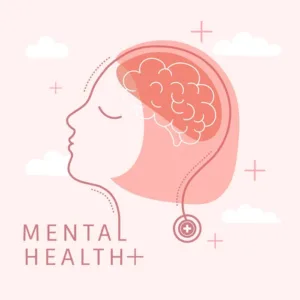The contemporary life is increasingly dynamic, and Stress has become an inseparable part of it, affecting not only a mind but also a body. In the midst of this noise, Guided Imagery for Stress Management emerges as an effective method.
This method utilizes the capacity of mind to generate mental pictures with great vividness as well as a wand into relaxation and emotional balance. Throughout this article, we will learn how one could use guided imagery and use of this technique in managing difficult situations.
Guided Imagery for Stress is a relaxation technique that involves visualizing positive, peaceful settings like a beautiful beach or a peaceful meadow.
Understanding Guided Imagery:
Guided-imagery is a form of mental imagery that uses the imagination to produce calming images in the mind to evoke positive feelings and sensations. These images function as a mental retreat, wherein people can at least for a moment escape from such stressors as well as their outside world and lose themselves in a serene mindscape.
Either by way of self-directed visualization or with the help of a guided imagery recording, this technique can be a highly useful source of stress reduction.

Coping with Difficult Situations:
Guided Imagery can be a valuable tool when facing challenging situations. Here’s how you can adapt this technique to cope with stressors:
- Preparation for Stressful Events: Before entering a stressful situation, take a few moments to engage in guided imagery. Visualize yourself handling the situation with calmness and confidence. This mental rehearsal can positively impact your actual response.
- Midst of Stress: If stress arises in the midst of a challenging situation, mentally transport yourself to your chosen calming scene. Take a mental break, breathe deeply, and visualize the stress dissipating as you immerse yourself in the soothing imagery.
- Post-Stress Reflection: After encountering a stressful event, use guided imagery for reflection and recovery. Picture yourself letting go of any lingering tension and embracing a sense of calmness and resilience.

How to Use Guided Imagery for Stress Management:
Find a Quiet Space:
Find an area where you can go to unwind peacefully and comfortably. This may be an armchair in your living room, a park, or any place where you feel yourself comfortable.
Deep Breathing:
To start, take several slow deep breaths to regulate your nervous system. Breathe in fully through your nose, hold for a few moments and let out slowly through your mouth. Do this, several times, until you get a feeling of relaxation.
Choose Your Imagery:
Focus on a calming picture or image in your mind. This can be a quiet beach, a restful forest, or any other place that induces calm. The secret lies in selecting the option that means something to you.
Engage Your Senses:
Visualizing your selected scene, you could use all your senses. Let the heat of the sun, capture the subtle sound of leaves and appreciate the freshness of air – allow yourself to be enveloped with sensory details in order to improve the impact of imagery.
Positive Affirmations:
In your guided imagery, add positive affirmations. Repeat the affirmations that reaffirm relaxation and health such as “I am at peace”, or “I will release tension from my body”.
Practice Regularly:
Guided imagery is also a skill, and its efficacy enhances with practice. Use this method as part of your everyday life or, especially in stressful moments, to create a base of resilience.
Guided imagery for Stress is based on the belief in the power of imagination and visualization. Guided imagery is the generation of specific mental images to evoke a state of relaxation or physiologic change. It takes advantage of the communication links between the mind and the body and uses the imagination to generate intentional physiologic states, such as relaxation or relief of pain. It can be performed with a therapist and patient in person or by a patient alone listening to a recording.
Guided Imagery : Creative Interventions in Counselling & Psychotherapy by Eric Hall
The authors describe the different processes of using guided imagery and working from a script and show how drawing can be used to augment imagery work. In addition to planned strategies for using imagery, they also show how images which arise spontaneously during sessions can be harnessed and used to enhance the therapeutic process.

Guided Imagery for Groups by Andrew E. Schwartz Guided Imagery for Groups contains everything you need to use this technique with any audience, in any setting.
Guided Imagery for Stress is a versatile and accessible technique that empowers individuals to navigate tension with grace and resilience. By incorporating this practice into your daily life, you can harness the power of your imagination to create a sanctuary of calmness. Remember that the mind is a potent ally in the quest for stress management, and guided imagery provides a bridge to a more serene and balanced existence.




